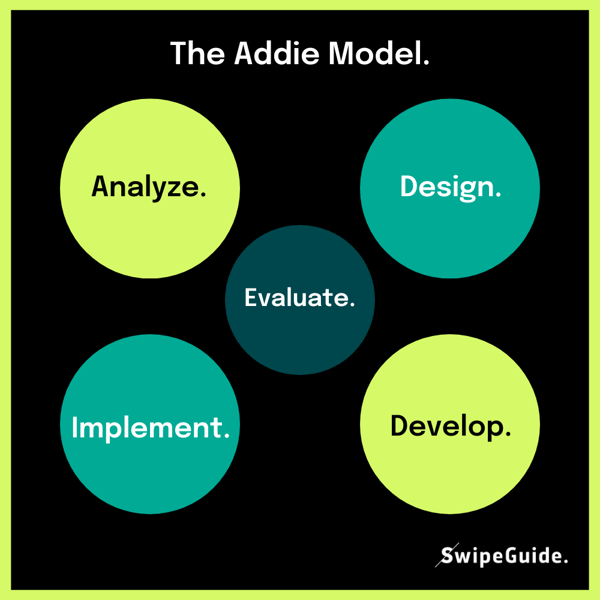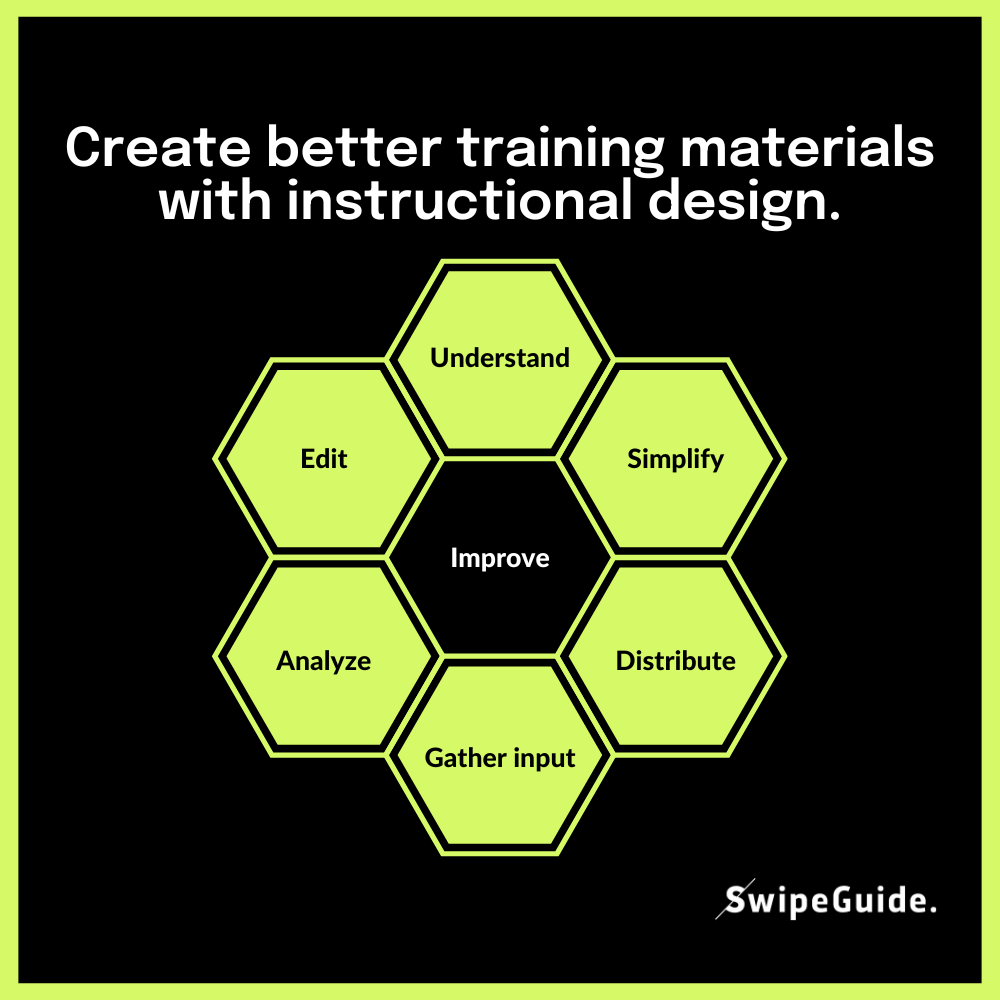Instructional design =
The process of methodically designing, creating, and sharing instructional materials in such a way that they are user-friendly and easy to internalize.
Applying instructional design principles in work instructions, standard operating procedures, and one-point lessons is a best practice to train employees effectively and drive productivity on the shop floor.
Let’s explore these principles in more detail.
Instructional design principles explained.
The most prevalent principles used by instructional designers are best explained in the “ADDIE model” (pictured below).

The ADDIE model consists of the following steps:
- Analyze who the learner is and what their goal is.
- Design the instructions so that the learner can achieve their goal in the most effortless way possible.
- Develop the content with the goal in mind. For instance, using short and actionable text, gifs, illustrations, and other visuals for effective knowledge delivery.
- Implement the instructions in a way that facilitates access and reduces friction for the learner. For example, using mobile devices instead of physical manuals that are hard to sift through.
- Evaluate how you can continuously improve the instruction to help the learner perform the desired task in the right way from the start.
Instructional design for better training.
Here are some practical ways to incorporate these instructional design principles in your training materials:

- Understand your learners and create instructions that are centered on them.
- Set up your guides, checklists, and step-by-step instructions with a minimalist approach that drives action and knowledge retention.
- Aim for easy distribution. Today, your team can use cell phones, iPads or wearables to access instructions. No more sifting through paper manuals or clunky PDF files.
- Collect feedback directly within the instruction platform to evaluate training materials for continuous improvement.
- Use solutions with built-in analytics to monitor what’s working and what the bottlenecks are.
- Look for tools that make editing seamless. SwipeGuide features like an approval process and revision history make it easy to track any adjustments. Changes can be made effective with just a few clicks and distributed instantly.
Want to learn more?
👉 Here's how Coca-Cola is improving safety with SwipeGuide.
👉 Major impact on your operations. Download the ROI Whitepaper.
👉 Complete guide: Instructional Design for smoother processes.
👉 Instructions and checklists for Orkla's frontline.
.png?width=1921&height=888&name=instructional%20design%20(1).png)


